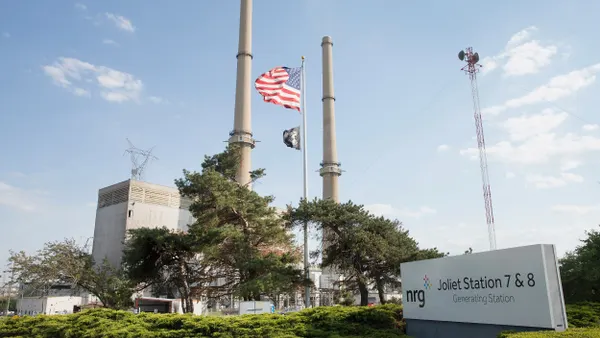Dive Brief:
- The Southwest Power Pool has released its final analysis of the draft Clean Power Plan, finding a state-by-state approach to compliance would cost almost 40% more than a regional approach.
- SPP's analysis showed the state-by-state approach would require an estimated $3.3 billion annually in new generation capital investment and energy production costs.
- The study also showed more than 15 GW of generation in excess of current assumptions could be at risk for retirement without a regional approach. Similar evaluations from grid operators PJM and MISO have also found cost savings and less generation retirement associated with a regional approach.
Dive Insight:
The message to states from their grid operators keeps getting stronger: Take a regional approach to the Clean Power Plan.
That's the upshot of Southwest Power Pool's final analysis of the draft plan . While the details may change when the final regulations are released next month, right now the grid operator said a state-based compliance program would wind up costing 40% more and would be more disruptive to the region's 14-state grid..
“Our analysis affirmed that a state-by-state compliance approach would be more expensive to administer than a regional approach,” Lanny Nickell, vice president of engineering for SPP, said in a statement. “A state-by-state solution also would be more disruptive than a regional approach to the significant reliability and economic value that SPP provides to its members as a regional transmission organization.”
The study went on to show up to that a state-based approach could put an additional 15.1 GW at risk.
In its analysis, SPP said it used a nominal $45/ton carbon-cost adder to incent dispatch of lower carbon-emitting generation resources. The study also incorporated 5.5 GW of wind resources and 4 GW of gas-fueled resources above currently planned capacity. Those plans already call for approximately 4 GW of new wind and 22 GW of new gas.
“The study concluded that coordinating individual state plans in a regional market where energy flows without respect to state boundaries and benefits are shared regionally will be extremely challenging and risky for states,” SPP said.
The grid operator also examined the potential for over-compliance — reducing emissions more than necessary — and found the regional scenario resulted in a 3% over-compliance rate.
SPP said its analysis "assumed an additional 9.5 GW of capacity would be needed by 2030 at a total of $16.9 billion in capital costs incremental to a [business-as-usual] resource plan. Including production cost, this equates to $3.3 billion per year in additional costs to comply with the CPP on a state-by-state basis."














